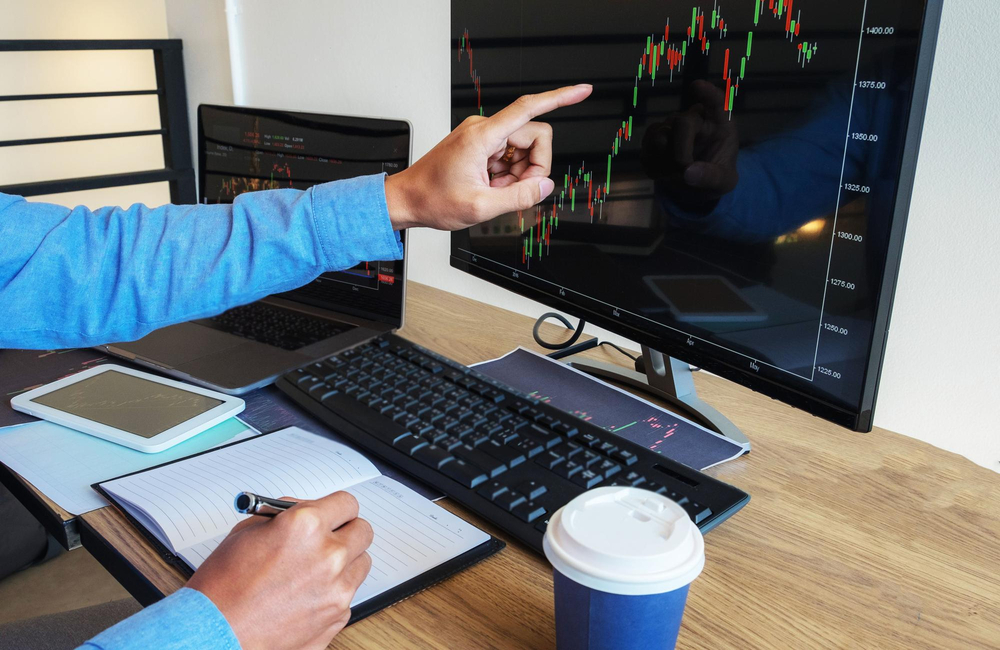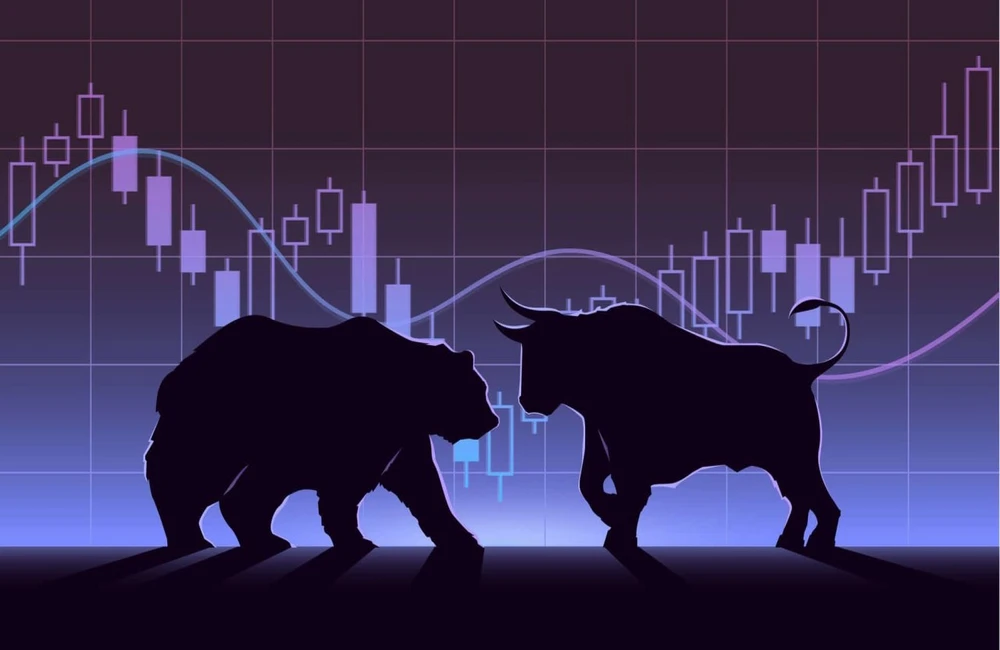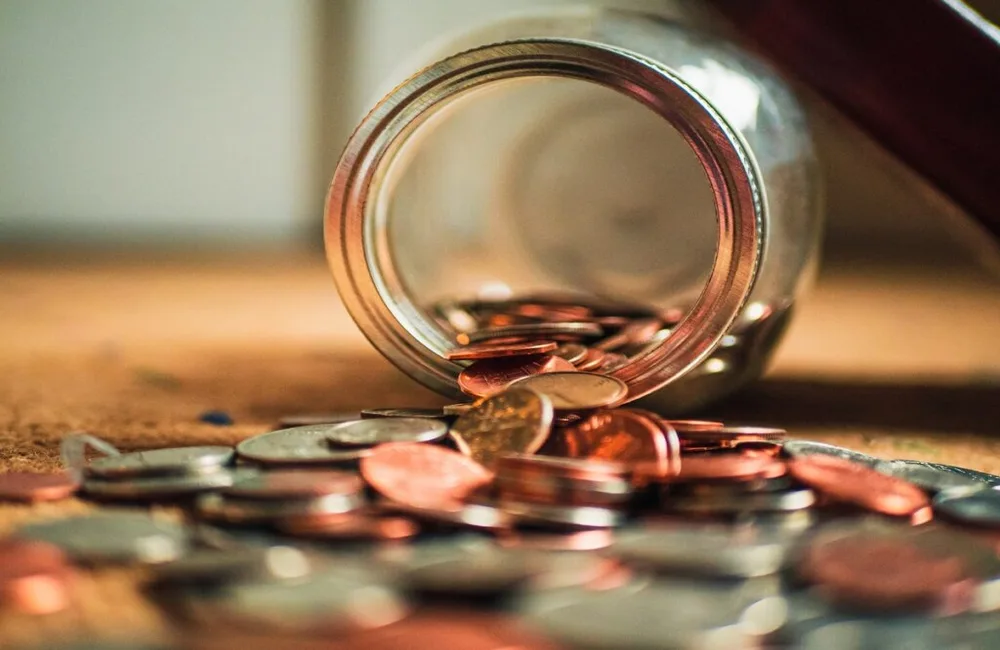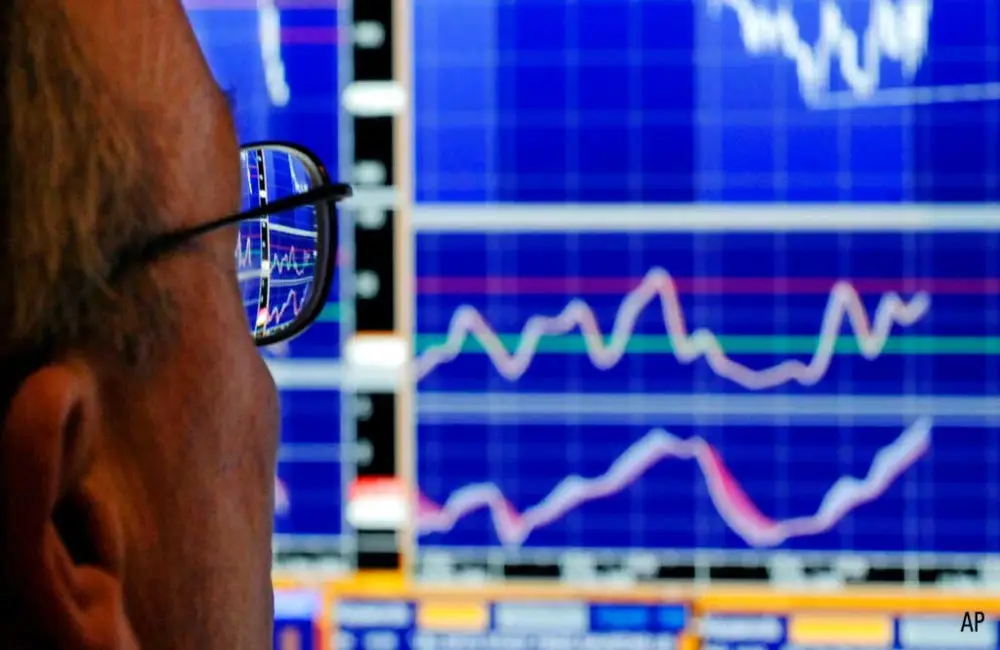United States stocks had their best day in more than two years after soft inflation data on Thursday.
ASX futures have added 42 points or 0.6% to 7204 as of 8:00 am AEST on Saturday, a green open.
That caps off a wild week for US stocks, in which investors followed midterm elections and the collapse of crypto exchange FTX, which filed for bankruptcy Friday after fellow exchange Binance pulled out of a rescue deal earlier Wednesday.
The Dow rose 0.1 percent to 33,747, the S&P 500 gained 0.9 percent to 3,992 and the Nasdaq climbed nearly 1.9 percent to 11,323 as big tech stocks rallied. This left the Dow up 4.2% for the week, the S&P up 5.9% and the Nasdaq up 8.1% the tech heavy index’s best week since mid-March.
In commodities, Brent crude rose 2.11 a barrel, gold rose 0.69% to US$1,767.54.
In local bond markets, the Australian 2 Year yield decreased to 3.07% and the 10 Year obtained at 3.65%. The overseas yield on 2 Year US Treasury notes was rising to 4.33 % and the yield on the 10 Year US Treasury notes was falling to 3.81 %.
The Australian dollar settled at 67.082 US cents, versus the prior close of 66.16. The Wall Street Journal Dollar Index, which measures the U.S. currency against 16 others, slipped to 99.12.
Asia
Shares in Chinese companies surged on a promise by Beijing to relax Covid restrictions and cut quarantine periods for inbound travel. The news “suggests that the government is likely to move toward reopening the economy, although the timing is unclear at this stage,” said Zhang Zhiwei, president and chief economist at Pinpoint Asset Management. Shares in consumption companies and property stocks rose, with China Tourism Group Duty Free rising 3.7 percent. Gemdale, China Vanke and Poly Developments & Holdings all surged by the 10% daily limit on hope that Beijing will come to developers’ aid and relieve the financial pressure. The Shanghai Composite Index rose 1.7%, bringing its weekly gain to 0.5%. The Shenzhen Composite Index rose 1.3 percent, and the ChiNext Price Index added 2.0 percent.
Stocks in Hong Kong surged, and the market was back at one of its peaks of the morning, after Beijing relaxed border restrictions even more. The Hang Seng Index surged 7.7% to 17325.66, its biggest one-day percentage gain since March and highest close in over a month. Almost all index members were higher, with Chinese property developers taking top honours on the back of optimism after the latest round of government refinancing support for the sector. Country Garden flew higher by 35% and Longfor advanced 29%. Internet behemoths also rallied, with JD. com gaining 16% and Meituan by 12%.
The Nikkei Stock Average finished up 3.0% at 28263.57, as investors expected the Fed to tighten policy more slowly after weaker-than-expected U.S. inflation data. Precision instrument makers were among Tuesday’s best performers, with Shimadzu climbing 3.8 percent, Hoya jumping 8.7 percent and Olympus gaining 3.9 percent. Mazda Motor, the automaker, rose 7.6 percent, and Fujifilm, the optics-related company, rose 11 percent after the two companies raised their earnings guidance. The dollar was last at 141.58 yen from 140.97 yen late Thursday in New York. The yield on 10-year Japanese government bonds dipped 0.01 percentage point to 0.235 percent.
Europe
European stocks closed mixed. The pan-European Stoxx Europe 600 rose 0.1% and the French CAC 40 and German DAX were up 0.6%, while the FTSE 100 fell 0.8%.
“European markets kicked off in plus territory on Friday, taking more leads from the US CPI-inspired gains yesterday, as Chinese authorities said they were easing some of its Covid quarantine restrictions,” wrote CMC markets analyst Michael Hewson. “But the momentum has begun to wane heading into the weekend. After the best one-day move seen since April 2020, and despite bond markets being closed for Veteran’s Day, US markets have failed to kick on.”
Insurer Prudential and luxury fashion group Burberry are among the risers as well as mining shares Anglo American, Antofagasta and Rio Tinto. Meantime, market sentiment also gets a lift following cooler-than-expected U.S. inflation data on Thursday. “The October inflation print cements the case for the Federal Reserve to deliver a more diluted 50-basis-point [interest rate] hike in December,” wrote Mark Haefele, chief investment officer for UBS Global Wealth Management. In the U.K., data indicated the economy shrank 0.2% quarter-on-quarter during the third quarter, less than the 0.5% decline forecast in a WSJ poll of analysts.
North America
The S&P 500 closed higher on Friday just shy of regaining the 4,000 level capping an astonishing week of gains for the major US equity benchmarks that showed buyers came out in full force after inflation data for October suggested that cost pressures had slowed at last. The Dow Jones Industrial Average barely rose on Friday, adding 0.01 percent, and closed around 33 points up at nearly 33,749, a 4.2 percent gain for the week. The S&P 500 index rose 0.9% Friday for a weekly gain of 5.9%. The Nasdaq Composite Index clung to a 1.9% rise on Friday and recorded an 8.1% weekly advance, according to Dow Jones Market Data, just after its most compelling weekly rise since mid-March.
The stock rally followed data that showed inflation on an annual rate remained at 7.7 percent in October, below a summer peak of 9.1 percent.
One of the wildest weeks of the year in global markets. To begin the week, many investors were captivated by the drama that played out between two of the largest crypto firms, FTX and Finance. It quickly spiraled into a crypto currency debacle that is poised to inflict losses on big and small investors alike, with FTX filing for bankruptcy on Friday in a dramatic descent for a linchpin of the cryptocurrency market.
Even stock market investors were rattled by the news, resulting in a market selloff in the middle of the week. But by Thursday, new data on inflation and a glimmer of hope that it may be coming down had stocks soaring. That enthusiasm held in early trading Friday.
The outcome has been a fast reversal of trades that have dominated for most of the year. Treasury prices surged in a big rally that also helped push yields down. The dollar reversed course. And stocks soared. Tech stocks in particular have been big winners in the recent rally, recovering some of their huge losses from earlier in the year.
Several investors said the wild swings would be short-lived. It’s a “temporary bear market rally,” according to Solomon Tadesse, head of equity quant research in North America at Societe Generale.
Shares of the mega-cap technology companies continued to soar on Friday. Amazon’s stock was up 2.4% in recent trading and is up nearly 9% for the week. Alphabet shares gained 1.75%, and were up about 10% for the week.
Beijing’s announcement that it would relax restrictions imposed during the pandemic helped lift spirits in markets. The world’s second-largest economy has been a drag on global growth this year after imposing lockdowns and restricting travel to contain a coronavirus outbreak.
On Friday, health officials announced Beijing was reducing the time travelers were required to spend in quarantine and scaling back mass testing, among other measures.
That drove prices for Brent crude oil 2.9% higher, to $96.35 a barrel. It also lifted the shares of European luxury-goods makers like LVMH Moët Hennessy Louis Vuitton, which had benefited from a wave of Chinese demand for their wares ahead of the pandemic. American depositary receipts of Chinese companies such as Alibaba Group Holding Ltd. and Pinduoduo Inc. gained in New York.
But the focus of global investors and traders stayed on slowing inflation in the U.S. The Fed’s push to raise rates at the fastest clip since the early 1980s to tamp down consumer-price increases has roiled financial markets this year.
Stocks have been pummeled this year, especially tech stocks, which benefited from years of easy money. Government bonds have fallen in price, pushing yields higher. A surge in the dollar has caused problems for economies across the globe, most of all in the developing world, where nations pay for imported commodities in dollars.
The S&P 500 began its 107th day of trading in a bear market on Friday, heading for the longest bear market since 2001, according to Dow Jones Market Data, examining how many days it took the index to enter and then exit a bear market.























